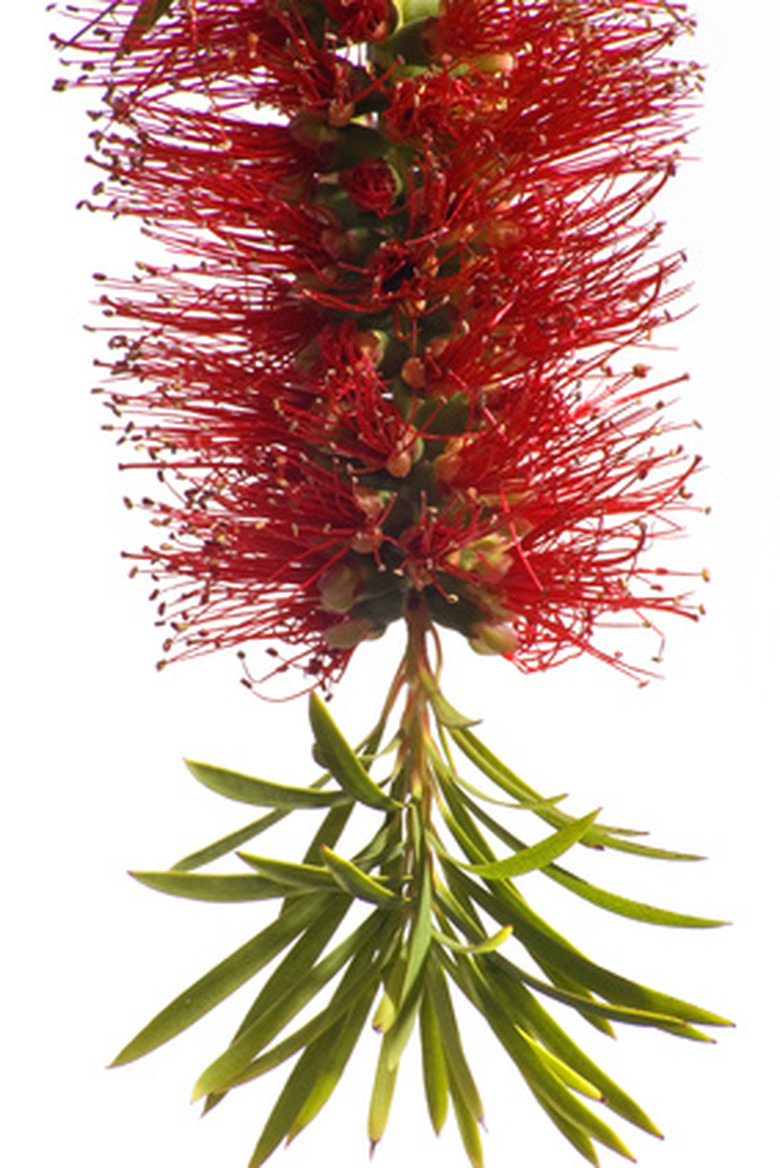How To Use A Bottlebrush Shrub In Landscaping
The bottlebrush shrub has several species, but the most common and hardiest is the Callistemon citrinus, the red bottlebrush, so named because of its bright red flowers. Bottlebrush shrubs thrive in USDA hardiness zones 9 through 11 and can be planted in the ground or kept in large planters. Most species, if not pruned, grow to 15 feet in height and have an upright, moderately dense crown.
Step 1
Plant bottlebrush shrubs around the perimeter of your property to form a divider between your property and a neighbor's. The bottlebrush shrub does not provide a lot of privacy if left to grow to its full height, but makes a colorful divider that attracts butterflies.
Step 2
Use the bottlebrush shrub as a backdrop to a garden. Prune the bottlebrush so that it stays a certain height, or allow it to grow to its full height for a shaded garden.
- The bottlebrush shrub has several species, but the most common and hardiest is the Callistemon citrinus, the red bottlebrush, so named because of its bright red flowers.
- The bottlebrush shrub does not provide a lot of privacy if left to grow to its full height, but makes a colorful divider that attracts butterflies.
Step 3
Plant the bottlebrush as an anchor plant at the end of a long, narrow garden. Plant shade flowers under and around the bottlebrush, and plant flowers that require sun outside the perimeter of the canopy.
Step 4
Plant the bottlebrush in the center of your yard. Use landscaping blocks or fence to make a ring around the tree (at the perimeter of the canopy). Fill the ring with wood chips or shade-loving plants.
Step 5
Plant a stand of bottlebrush shrubs on a larger piece of property. Prune the lower branches. The stand will attract butterflies and birds, and also provide a shaded area in which to put garden benches or a gazebo once the trees reach 8 or 9 feet tall.
- Plant the bottlebrush as an anchor plant at the end of a long, narrow garden.
- Plant the bottlebrush in the center of your yard.
Bottlebrush Shrub In Landscaping
Bottlebrush as an evergreen shrub (C. citrinus) comes in both dwarf and standard varietals. Regular varietals grow up to 10 feet tall and wide. Dwarf sizes work as accents in a planting bed or in a container to liven up a patio or expanse of green space. All forms meld well with modern architecture. Bottlebrush is a favorite with hummingbirds, which you can watch dip into the shrub's flowers for nectar feedings.
